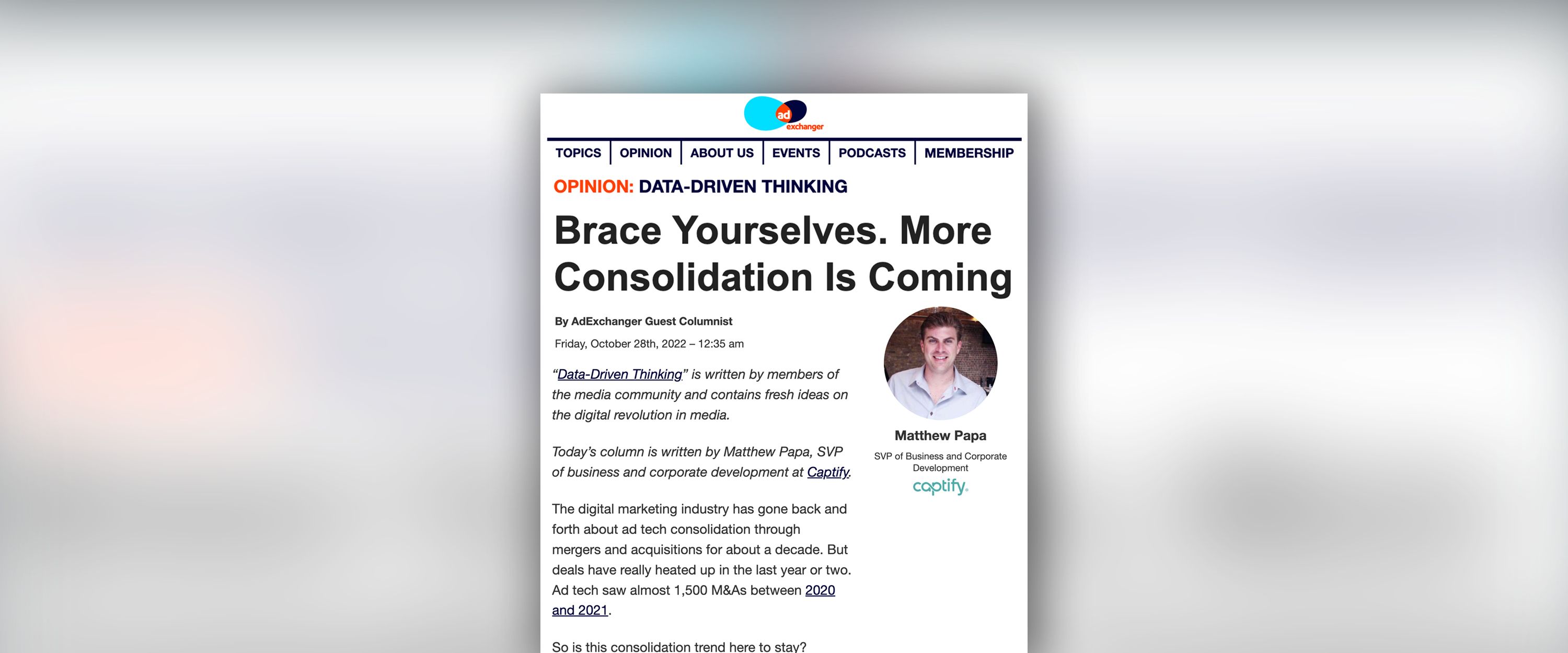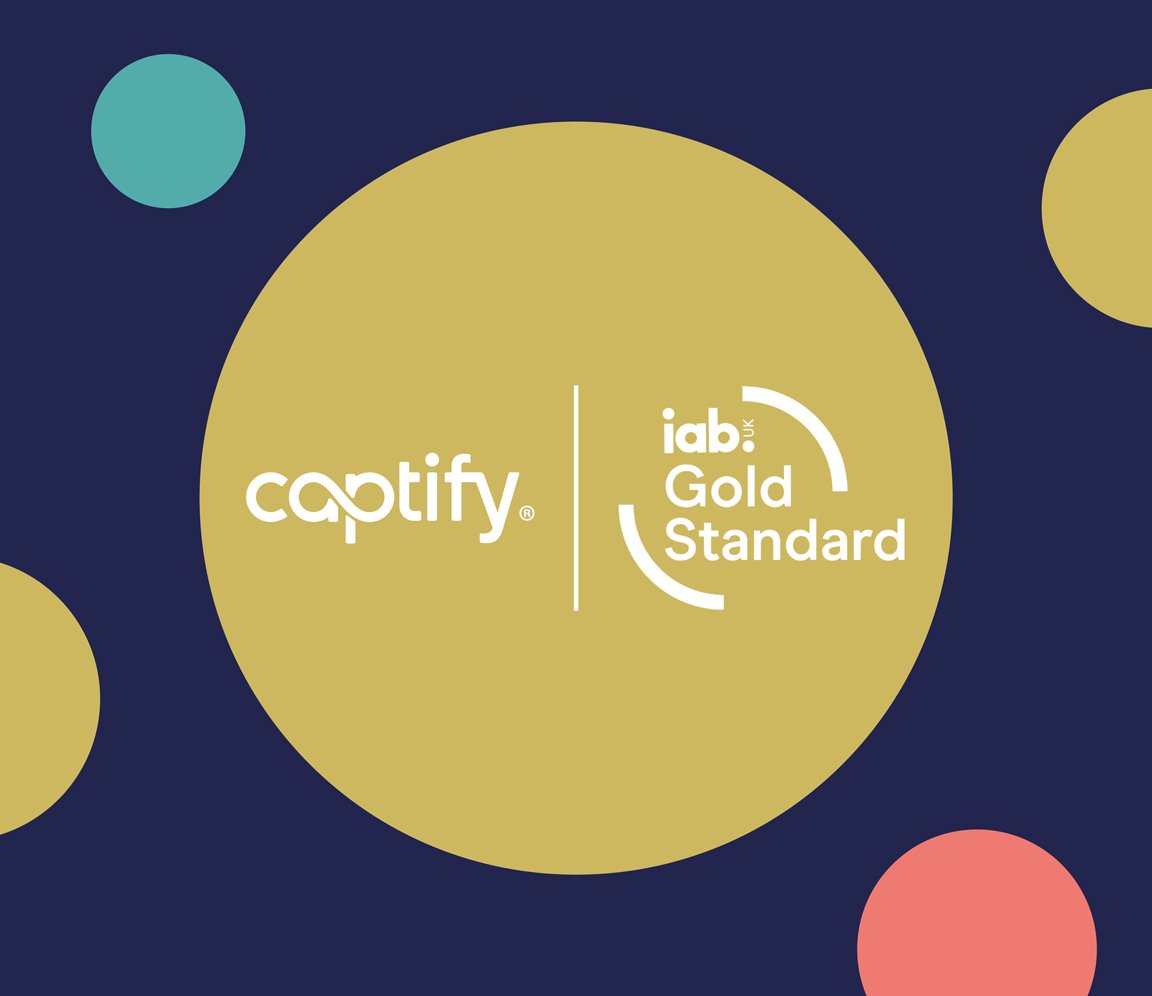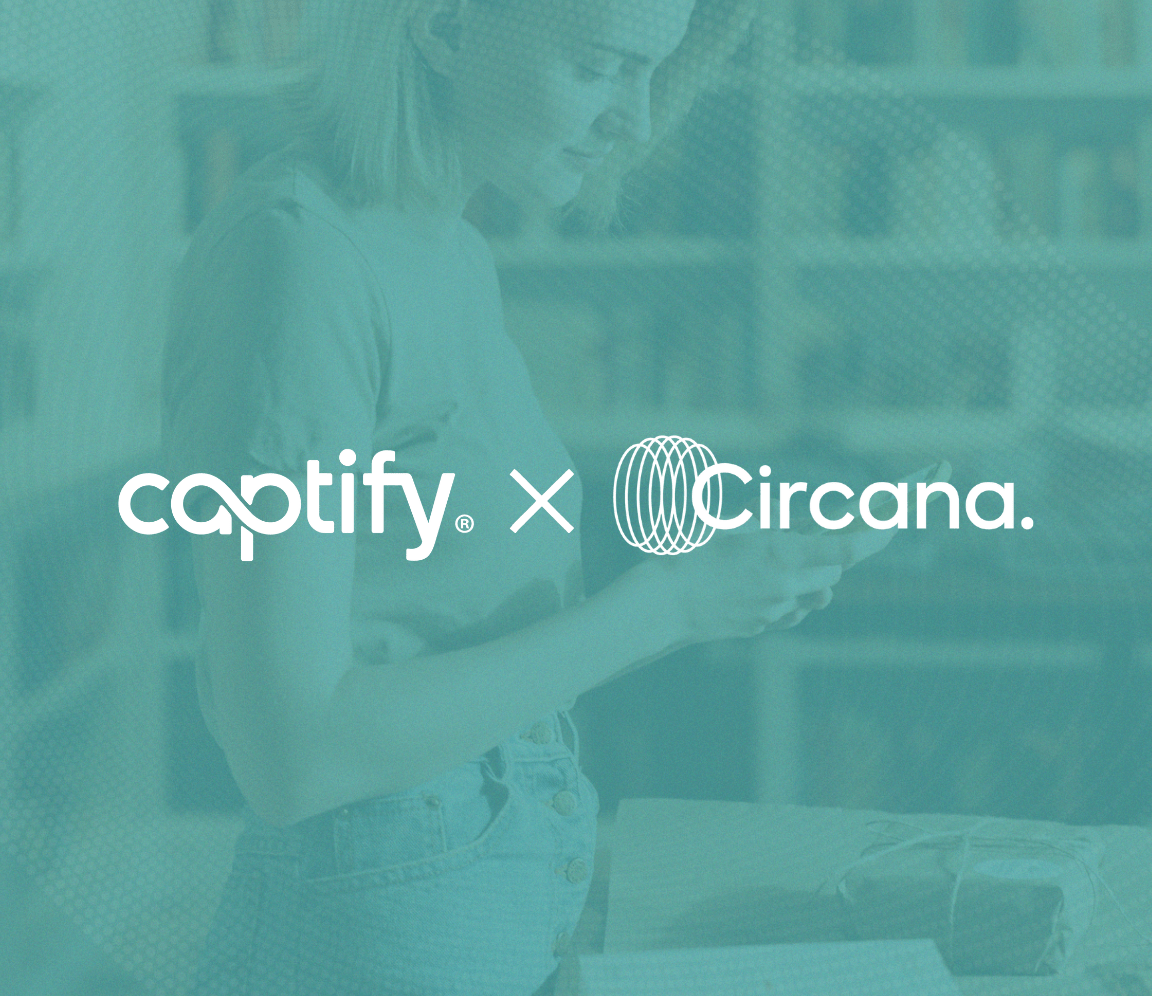AdExchanger: Captify’s Matthew Papa—Brace Yourselves. More Consolidation Is Coming
Extracted from AdExchanger, by Matt Papa, Captify’s SVP of Business and Corporate Development.
The digital marketing industry has gone back and forth about ad tech consolidation through mergers and acquisitions for about a decade. But deals have really heated up in the last year or two. Ad tech saw almost 1,500 M&As between 2020 and 2021.
So is this consolidation trend here to stay?
It looks like it’s a resounding yes.
The factors at play
M&A activity centered around SSPs and DSPs makes sense for decision-makers. The programmatic market has grown by leaps and bounds. It’s now one of the most lucrative methods that marketers use to advertise and measure campaigns and ultimately do business. And they’ll look to new opportunities to power growth.
Spurred by the pandemic and a looming economic downturn, some companies will look to ad tech innovations to find new ways to achieve a bigger market share while others are reducing budgets and reevaluating ad spend to stay afloat. Swallowing up the latest and greatest tech would be the easiest route to take advantage of the unique advertising tools each solution provides.
Yet an industrywide consolidation mindset is hampered by fears of history repeating itself. When Rocket Fuel, an ad tech company that was once valued at $2 billion, was acquired by its rival Sizmek for a relatively measly $125.5 million, industry leaders hit the panic button. Critics lamented that the company “was on the back foot for years and did a number of small, crappy acquisitions, buying two or three DSPs, and didn’t make it work.”
To avoid this same scenario, companies need to be strategic about their acquisitions.
Taking advantage of untapped opportunities
The ingredients for M&A upheaval are still out there. Nearly $2 trillion of uninvested capital sits with hundreds of private equity firms. The identity landscape is changing dramatically. A more transparent ecosystem is emerging. Opportunities to obtain legitimate online advertising first-party data are falling, which could open the door to new purchases throughout the sector. And access to supply will be paramount to succeed in the new digital age.
Bringing DSPs and SSPs into the mix via consolidated M&A activity could help companies create a unified, lower-fee buying path built for each side of the market. Just look at Tremor’s recent acquisition of ad tech firm Amobee and its omnichannel DSP. These acquired technologies would give marketers a more accurate look into how to reach target audiences and better insights on bottom-line ROI for meaningful results. It would also skew the market toward one-stop-shop standardization and better-quality ads across the board.
But the industry remains crowded, and some may say the window to get a more consolidated piece of the digital marketing pie for a bigger market share may have closed. Panicked agencies have established their core DSP partners as well as their core SSP partners, while publishers have also pushed to consolidate down to a handful of SSPs to achieve their yield optimization goals. Critics, in general, also say consolidation would reduce innovation because of the lack of competition.
Optimizing next steps
Market uncertainty remains around COVID-19 persisting and inflation and a global recession looming. Macroeconomic factors also caused a Q2 2022 dip by more than 30% across the board year-to-date. Yet against the odds and a stagnant second quarter, there will likely be a reversal.
By alleviating some of the issues above, companies will be able to compete with ad tech titans that have amassed immense market success and the best financial outcomes in the industry – including Google, Xandr and others.
The ability to provide efficient spend through new ad tech capabilities will push those that have still not been able to reach long-term sustainability over the edge. The stakes are higher than ever. Yet companies that commit to the natural evolution of their product will take the consolidation leap on some very undervalued and underappreciated SSPs and DSPs to gain meaningful market share.



